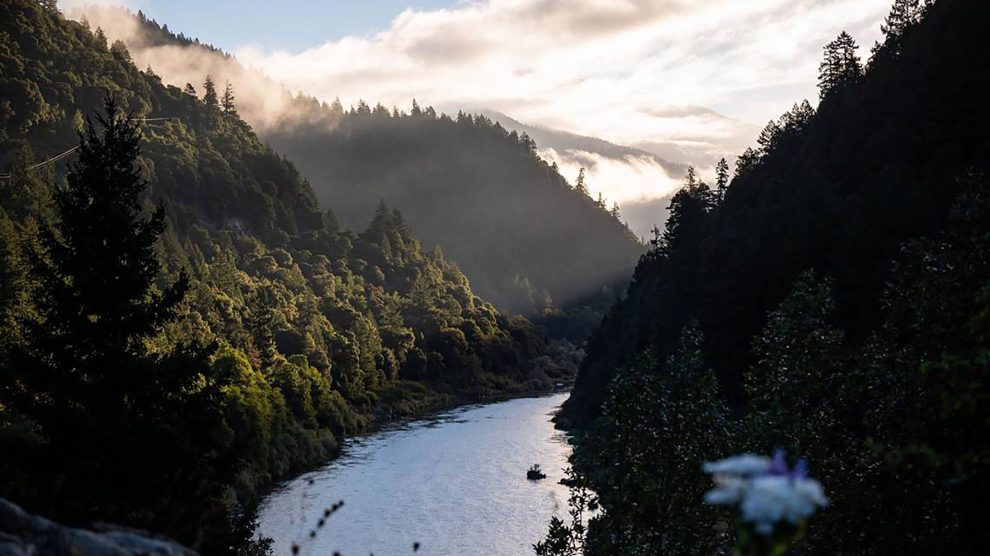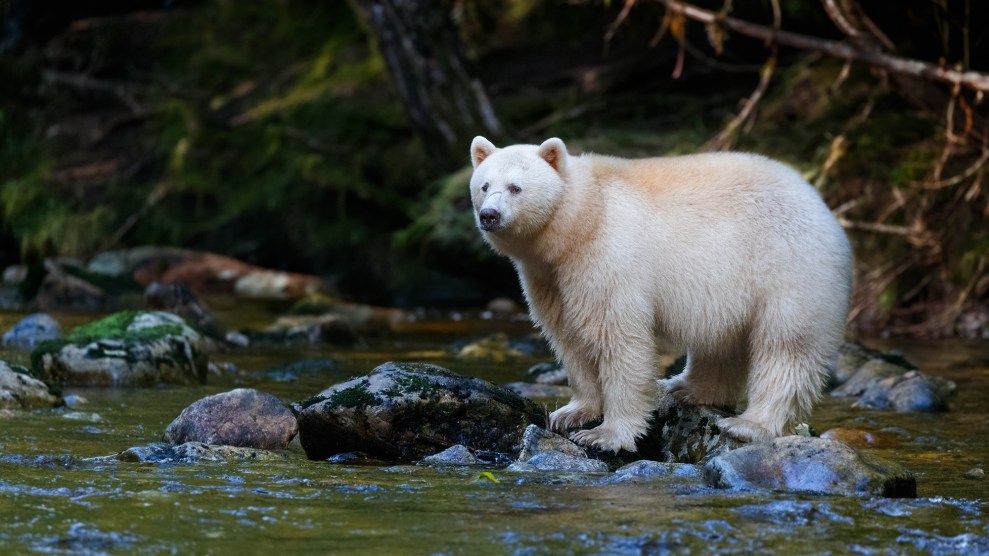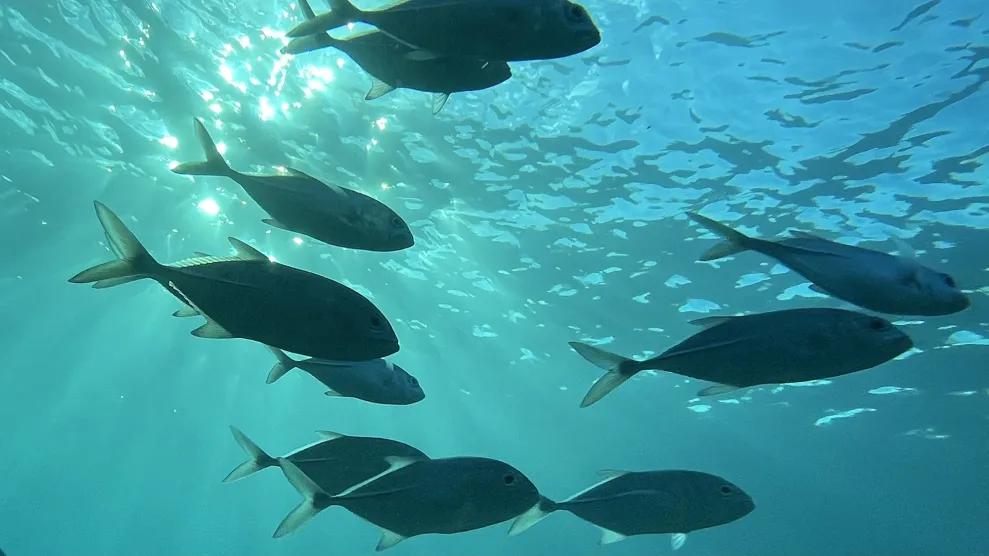
Kayakers and boaters draw attention to ocean acidification during a demonstration near Homer, Alaska.Scott Dickerson/Alamy Stock Photo via Hakai Magazine
This story was originally published by Hakai Magazine and is reproduced here as part of the Climate Desk collaboration.
It’s low tide in Bodega Bay, north of San Francisco, California, and Hannah Hensel is squishing through thick mud, on the hunt for clams. The hinged mollusks are everywhere, burrowed into the sediment, filtering seawater to feed on plankton. But Hensel isn’t looking for living bivalves—she’s searching the mudflat for the shells of dead clams.
“I did lose a boot or two,” she recalls. “You can get sunk into it pretty deep.”
Hensel, a doctoral candidate at the University of California, Davis, is studying shells, which are composed of acid-buffering calcium carbonate, as a tool that could one day help shelled species survive in the world’s rapidly acidifying oceans.
The inspiration for Hensel’s research comes from Indigenous sea gardening practices. On beaches from Alaska to Washington State, First Nations and tribal communities built rock-walled terraces in the intertidal zone to bolster populations of shellfish and other invertebrates. Although these sea gardens have not been documented farther south, clams were also vital sustenance in central California. Coast Miwok and Southern Pomo people harvested clams for food and shaped shells into bead money, says Tsim Schneider, an archaeologist at the University of California, Santa Cruz, and a member of the Federated Indians of Graton Rancheria. “So taking care of your clam beds was actually kind of protecting your vault, your bank,” says Schneider.
In the sea gardens of the Pacific Northwest, caretakers crushed the shells of harvested clams and mixed the fragments back into the beach. Recent research has shown multiple positive effects of this broken shell “hash,” from opening spaces in the sediment so young clams can more easily burrow and grow, to releasing chemical cues that encourage larval clams to settle nearby.
This millennia-old practice may hold the key to addressing a new crisis. As humans burn fossil fuels, oceans are absorbing carbon dioxide from the atmosphere, making seawater more acidic. At lower pH levels, clams and other shellfish struggle to build shells. As their protective structures weaken and dissolve, the animals become vulnerable to damage and predation. But studies suggest that adding shell fragments to clam beds could release carbonate into the water, potentially neutralizing acidity caused by the greenhouse gas.
To find out whether shell hash could help California’s clams survive increasingly acidic conditions, Hensel brought shells from the tidal flat back to the lab, where she crushed them with a mortar and pestle and mixed the fragments into four plastic buckets of sand. Hensel filled these buckets, and four others containing sand alone, with local seawater and added the pinky nail–sized progeny of Pacific littleneck clams collected from Bodega Bay. She bubbled carbon dioxide through the seawater in half of the buckets to increase acidity. With their delicate shells, young clams are thought to be especially vulnerable to acidification.
After 90 days, Hensel dug up all the clams. Comparing the buckets containing more acidic seawater, she observed that the bivalves burrowed in shell hash had grown bigger than the clams in sand alone. Strangely, though, the larger clams were not heavier, and Hensel plans to cross-section the shells to assess whether the new growth was thinner or less dense.
The results inform researchers that shell hash does have a buffering effect under certain conditions, says Leah Bendell, a marine ecologist at Simon Fraser University in British Columbia, who was not involved in the study. “It was a well-done lab experiment.”
Bendell also studies the buffering power of shell hash. Working with the Tsleil-Waututh Nation, Bendell and graduate student Bridget Doyle added shell fragments to clam beds in Burrard Inlet, near Vancouver, British Columbia. In that study, hash reduced pH fluctuations in seawater seeping through the sediment, which can vary markedly with rising and falling tides. Although the reduction was limited to areas with coarse sediments, and the hash did not reduce the overall pH, Bendell sees the results as a hint of something promising. Given a longer period of time, shell hash could have a greater effect on pH in certain clam beds, she says.
Shell hash may not be a panacea for ocean acidification everywhere, but Bendell and Hensel are slowly piecing together how carbonate might help individual beaches weather caustic conditions. Next summer, when Hensel begins adding shell hash to Bodega Bay’s clam beds, she will incorporate another element of traditional sea gardening. Indigenous caretakers regularly tilled clam beds, loosening the sediment and mixing in shell fragments. This repeated digging could bring oxygen to burrowed clams, open more space in the sediments, and alter seawater chemistry, Hensel says, and she plans to measure how the physical process affects both seawater chemistry and clam growth.
Schneider is hopeful that Hensel’s work will improve the health of his community’s clam beds, and the two researchers are discussing ways to involve the Indigenous communities around Bodega Bay. “I think it would just be really rewarding to see community members from my tribe having opportunities to be back out on the landscape to interact with traditional resources in the ways that our ancestors did,” Schneider says.















